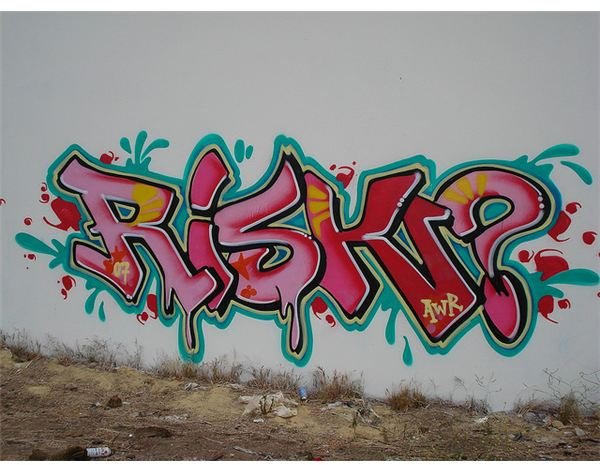Project Risk Tolerances: An Overview, Part 1 of 2
Define Risk Tolerance
Risk is the distribution of possible outcome in terms of time, cost, and performance of an endeavor, and risk tolerance is the willingness of a person or the organization to accept or avoid such risk.
Gamblers or risk takers have high risk tolerance or willingness to accommodate a high level of uncertainty when undertaking a task or making a decision. Risk avoiders, on the other hand, have low risk tolerance or reluctance to accept uncertain outcomes when performing a task or making decisions.
Very often, the extent of the ability or willingness to lose in monetary terms determines the risk tolerance of an individual or organization. For instance, a low-cost product comes with no guarantee on performance, or the inherent risk that the product may fail. People willing to lose the cost of buying a replacement product in the hope that the product performs normally might take the risk of buying this product, whereas those not willing to take the risk of losing this money pay extra to buy a product with guarantee.
The rule of thumb in risk assessment is that the higher the risk tolerance, the greater the risk; and the greater the risk, the greater the chances of financial windfalls and industry dominance.
Image Credit: flickr.com/Thomas Fano
Factors that Determine Project Risk Tolerance
In project management, risk tolerance is the measure of the degree of uncertainty that a stakeholder accepts in respect of the project risk assessment.
The three major stakeholders of a project are the organization that implements the project, the client or the owners of the project, and the project manager. Risk is intangible, or invisible, and as such remains subjective, based on stakeholder perceptions, and as such these three stakeholders rarely share the same view or opinion on the possible outcomes of a project, having divergent views of what constitutes risk and consequently risk tolerance.
The organization’s project risk tolerances usually depends on the extent of financial stability and project diversification. Organizations under pressure financially or under sustained pressure from competition generally have high risk tolerance levels, as the organization is already losing and consequences of failure do not make any difference anyway, whereas the benefits of the risk paying off become huge.
The risk tolerance of the project manager and other members of the project team depends on job security and corporate culture. They generally tend to be risk averse or go by the organization’s stance, for many organizational cultures look down on having a different perception on risk tolerance. This, combined with a failure to communicate any high levels of risk tolerance, may dissuade innovation.
The project owner’s risk tolerance depends on the project objective, which very often may remain at loggerheads with the organization’s risk tolerance levels.
Process

Determing risk tolerance depends on the identifiction of the risk factors and the degree to which the stakeholders are willing to take such risks.
The first step in identifying project risk tolerances is determining the extent of negative impact the organization is willing to risk, given a probability. Graphical representation of risk-willingness for each probability generates a risk tolerance line, or plotting each risk in accordance to its perceived likelihood of occurring and the impact of risk at worst-case scenario.
Establishing the risk-tolerance line provides a good indication of organizational risk tolerance. This helps organizations resolve individual risks that lie above the organizational tolerance levels.
Image Credit: flickr.com/A Syn
How to Improve Risk Tolerance
The major challenge in identifying project risk tolerances is reconciling to an agreeable level of risk tolerance among the stakeholders. Many projects fail or attract time and cost overruns owing to the failure of an effective communication mechanism between the key stakeholders, causing misconceptions about the risk tolerance levels. The project manager may carry out the risk tolerance identification process based on his or her perception of the risk when the organizational and owner perceptions may vary.
The best solution to overcome this imbroglio is to incorporate a specific risk management plan in the project planning phase. This plan needs to pay detailed attention to risk tolerance levels of all the stakeholders.
Other ways to improve managers’ risk tolerance include:
- Reviewing the organization’s compensation policies for project managers and other employees to place a portion of the compensation package at risk, dependent on performance or results. This causes either an increase or a decrease in the managers’ risk tolerance.
- Developing an organizational culture that supports proper risk-taking and innovation.
- Iinstituting comprehensive performance reviews of project managers to maintain a shared understanding and vision of risk tolerance.
- Making available data of historical figures and facts concerning similar scenarios outside the project and even outside the organization, to allow for a more reliable analysis.
Project risk tolerance does not remain static and changes over time, and risk tolerance assesment is an ongoing process throughout the course of the project.
Benefits
Risk tolerance is a crucial component of project risk management. Attention to risk tolerance gives a better understanding of the extent of project risks that require remedy and allows prioritization of risks based on the acceptability of risks. This leads to efficient utilization of resources and improved decision making. That contributes to better performance in lesser time than otherwise.
References:
- Egeland, Brad. “Defining Risk Management – Part 5: Risk Tolerance.” Retrieved from https://pmtips.net/defining-risk-management-part-5-risk-tolerance/ on 26October 2010.
- Kwata, Young Hoon, & Scott LaPlace, Kenneth. “Examining Risk Tolerance in Project-Driven Organization.” Retrieved from https://home.gwu.edu/~kwak/Risk_Tolerance.pdf on 26 October 2010.
